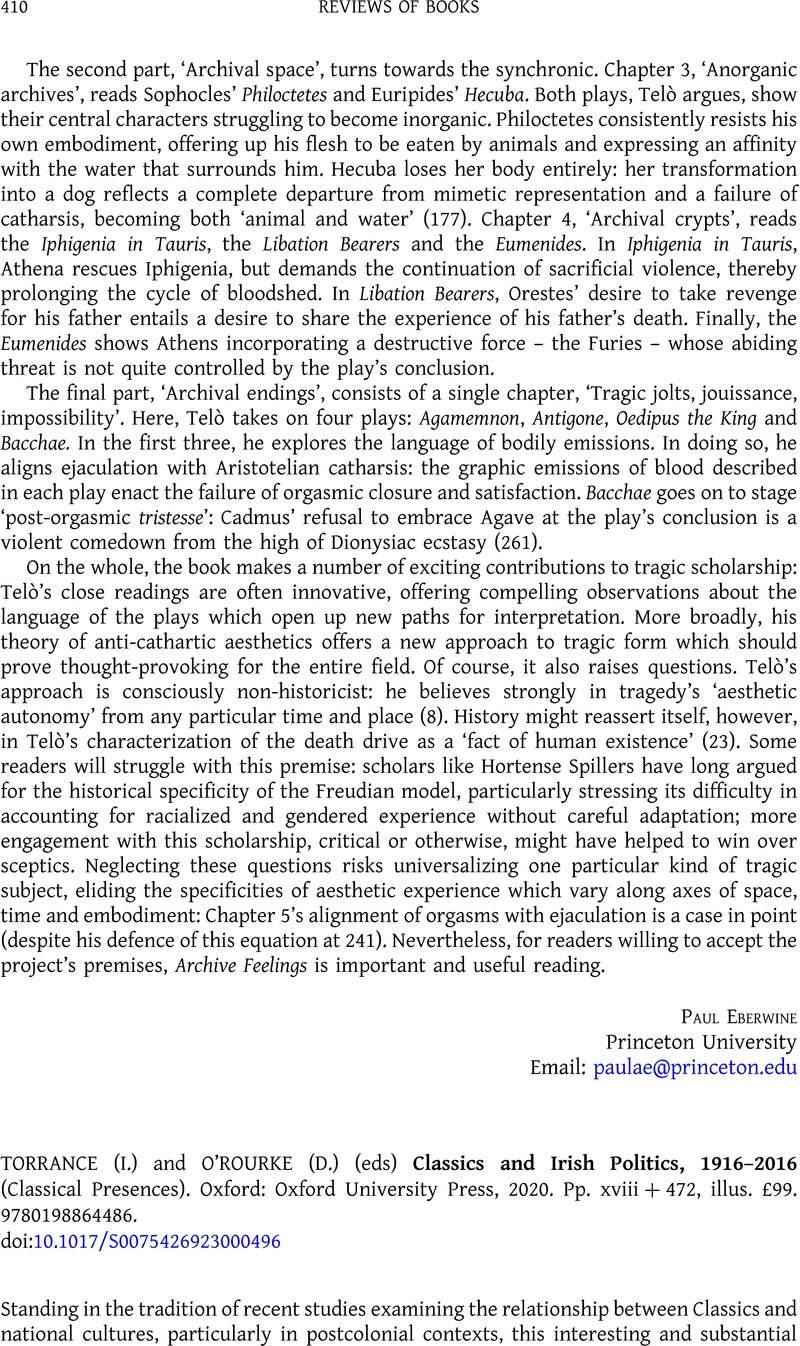No CrossRef data available.
Article contents
(I.) TORRANCE and (D.) O’ROURKE (eds) Classics and Irish Politics, 1916–2016 (Classical Presences). Oxford: Oxford University Press, 2020. Pp. xviii + 472, illus. £99. 9780198864486.
Review products
(I.) TORRANCE and (D.) O’ROURKE (eds) Classics and Irish Politics, 1916–2016 (Classical Presences). Oxford: Oxford University Press, 2020. Pp. xviii + 472, illus. £99. 9780198864486.
Part of:
Reception and history of scholarship
Published online by Cambridge University Press: 16 May 2023
Abstract
An abstract is not available for this content so a preview has been provided. Please use the Get access link above for information on how to access this content.

- Type
- Reviews of Books
- Information
- Copyright
- © The Author(s), 2023. Published by Cambridge University Press on behalf of the Society for the Promotion of Hellenic Studies


